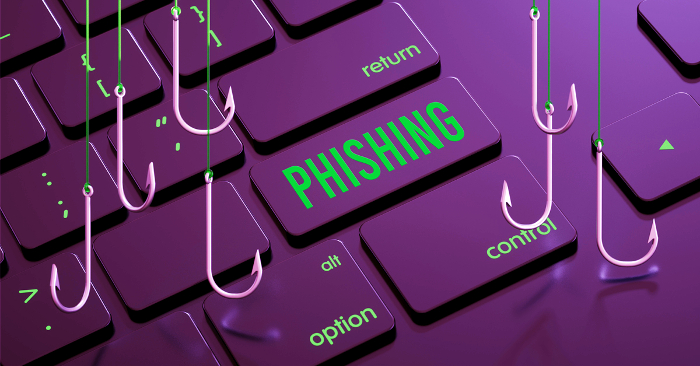Phishing is a type of cyberattack that uses targeted emails or other communications to trick users into revealing sensitive information or clicking on malicious links. Phishers can pose as a trusted entity, such as a bank or credit card company, to try to steal your login credentials or other sensitive information. They may also try to infect your computer with malware.
Phishing attacks are becoming increasingly sophisticated, so it’s important to be aware of the signs of a phishing email or other message. Such fraudulent messages are regularly transmitted via the creation of a false website, email address, or text that appears to represent a legitimate business. An example of a fake website that may look real is that a scammer might create it. This criminal website collects personal information from site visitors to trick them into thinking that this site is a real one.

Visitors can submit information to the site. The criminals make this happen by misusing the information inputted by their victims. Or the perpetrators transform the information and send it to other criminals to make illicit profits.
Phishing may also be accomplished in the form of emails or texts from scammers that are created to appear as if they are sent from a legitimate business. These emails or messages may appear to set up burglars to have access to a victim's computer or network.
Protecting Your Business From Phishing Attacks
Scammers make victims feel they have the security of a trusting source by mimicking or mimicking the look of a well-known company or person. They might also pretend to be a friend or relative of their victim.
Scammers may attempt to convince someone that they're in a risky predicament in which they need to release personal information immediately. Con Artists run the risk of having credit cards or bank accounts frozen, or sustaining other injuries. A classic instance of phishing involves an impostor creating a website that takes on a look similar to a major financial institution's.
Then, subsequently, that thief sends out a great number of random emails claiming to be from that bank and asks the email recipients to input private information (such as their PIN) into the website to update their financial records. When an unauthorized individual obtains the needed personal information, they try to log into the victim's bank account.
How to spot a phishing attack
One way to recognize phishing attempts is to observe them. You should look out for indications of phishing attempts to protect you from them.
How to get the most out of exceptional deals or offers.
If the email says an offer that is too good to be true, there might be an explanation for that. For example, an email stating that you've won a lottery or another lavish prize may be enticing you into clicking on a link or handing over sensitive information.
How to Create Effective Hyperlinks
Messages from other users should generally be trusted. Do never open attachments or links from questionable senders. Simply type the URL address rather than the hyperlink.
How to fix incorrect spelling in web addresses
People often get fooled into entering phishing websites that use misspellings in the web address.
Why you should never ignore an immediate pop-up
Be especially cautious when logging into websites, as pop-up windows often try to steal your information, especially if you grant the site root access. Look for a password manager and two-factor authentication software to guard against hackers, and make sure you have the latest security patches on all of your systems.

How to protect yourself from phishing
The Federal Trade Commission reports that phishing emails and text messages commonly exaggerate their credibility and typically tell a falsehood to trick people into clicking on a link or opening an attachment. Notable phishing activities may :
- Record suspicious activity or the legitimacy of a user's sign-in attempts on your account.
- According to you, there is an issue with your account or payment information.
- Think you're eligible for a payment from the government.
- Create an inaccurate invoice.
In summary, Phishing is a scam that involves cybercriminals sending fake emails to trick you into revealing personal information. They usually use social engineering techniques that try to get users to reveal sensitive information such as passwords and credit card numbers. Once criminals have this information, they can use it to impersonate users, access their accounts, and drain their bank accounts.